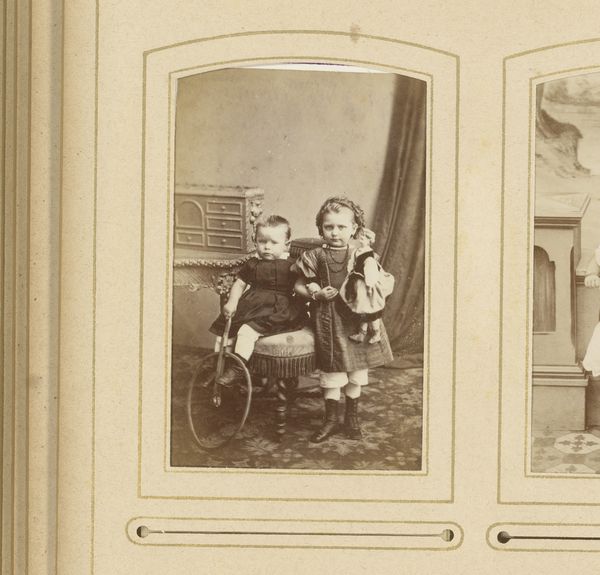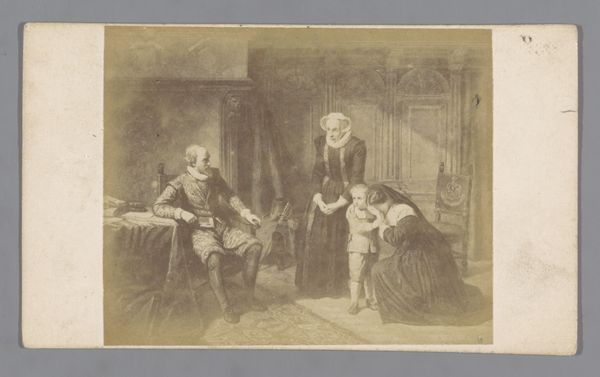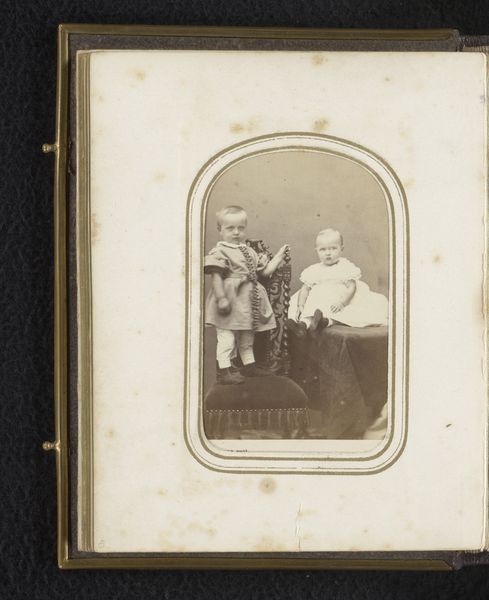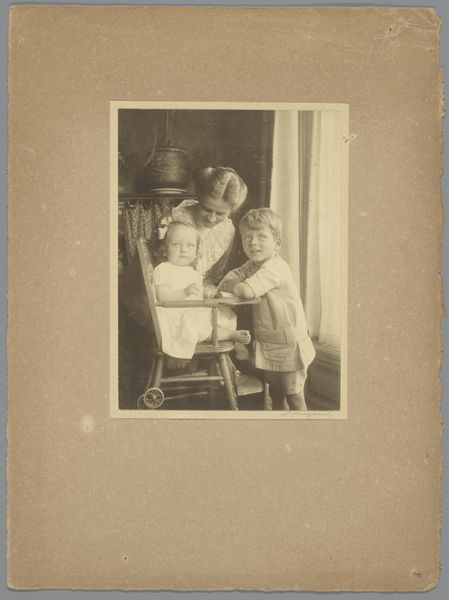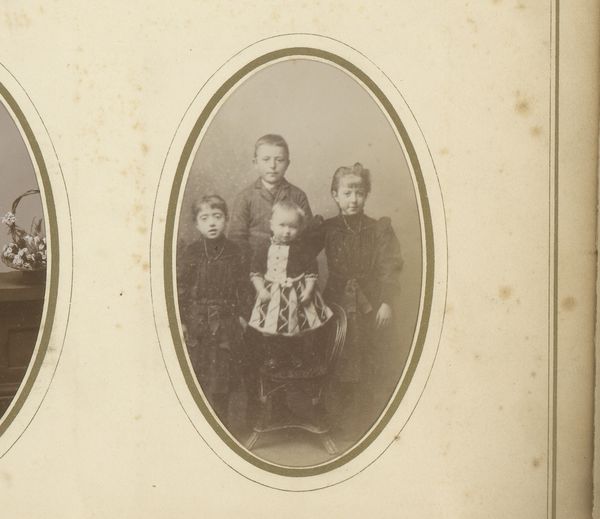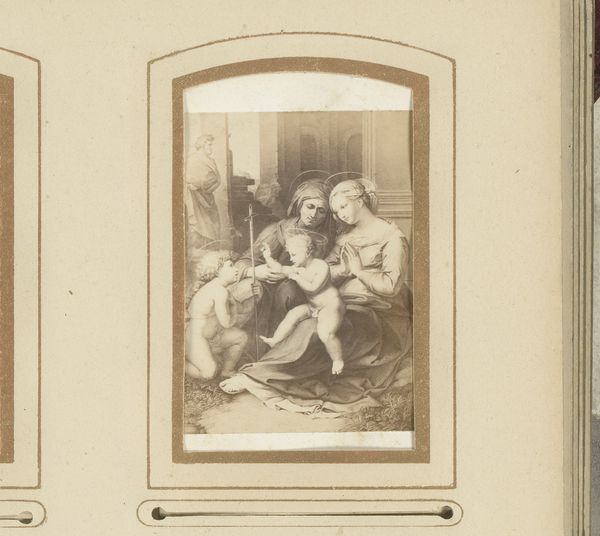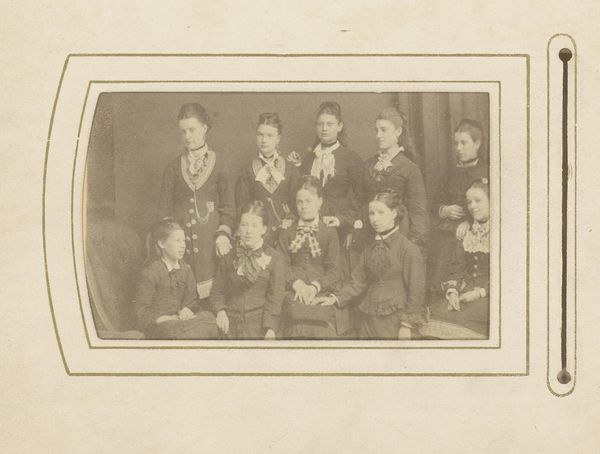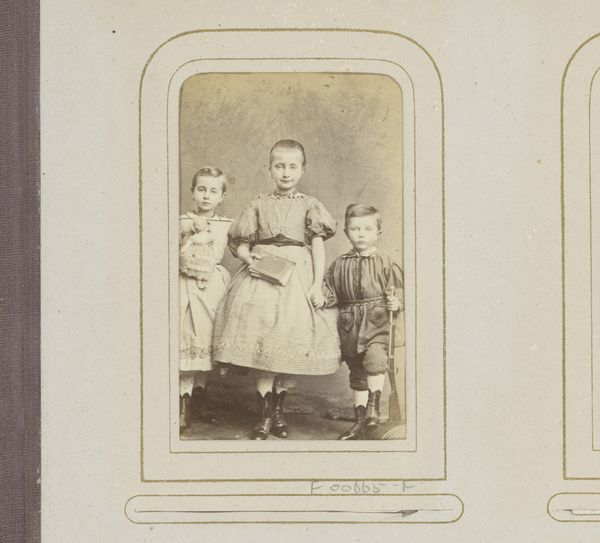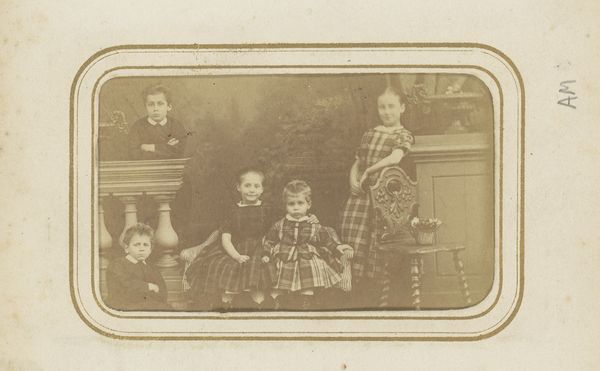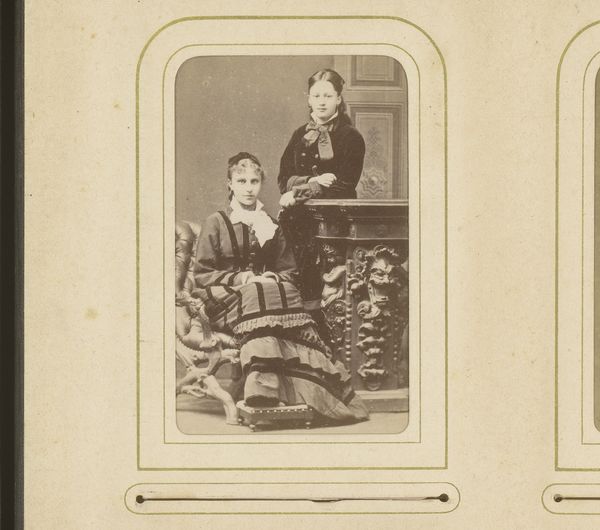
photography
#
portrait
#
photography
#
historical photography
#
19th century
#
genre-painting
Dimensions: height 84 mm, width 51 mm
Copyright: Rijks Museum: Open Domain
Editor: This photograph, "Fotoreproductie van Der erste Schoppen", was created sometime between 1870 and 1890. It’s fascinating, like a captured moment of 19th-century genre-painting. What catches your eye when you look at it? Curator: Well, as a historian, what I find interesting is how this photography reinterprets, perhaps even *stages*, a common genre scene for public consumption. Look at the composition—the posed figures, the deliberate arrangement of space… It raises questions about the socio-cultural functions of photography at this time. Was it simply to document life, or was it being used to create narratives and reinforce social ideals, like the value of a good 'schoppen', perhaps? Editor: That's true; the setting looks intentionally built as a jovial and relaxed gathering. Do you think this portrays an ideal situation or perhaps promotes certain social gatherings of the time? Curator: Exactly! Consider who would commission or buy such a print. Was it meant for private viewing, confirming existing values? Or was it intended for wider distribution, perhaps influencing societal perceptions of community or leisure? Notice how elements like clothing reinforce class distinctions and societal roles. It is essential to think of the market surrounding the artwork, as it plays an important part in defining it. Editor: That makes me consider how photography changed the consumption of art. Was it more readily available to other classes of society at this time? Curator: Precisely. The reproduction here speaks volumes, suggesting wider accessibility, even democratization, of imagery that was previously confined to painting and wealthy patrons. This shift introduced new social dynamics concerning the reception and interpretation of art. It really puts museums and galleries in perspective. What are they here to preserve and uphold? How is society engaged? Editor: That's incredibly interesting. It's more than just a photograph; it’s a reflection of the changing social and cultural landscape, especially when photography becomes more accessible than paintings. Curator: Yes. This photography acts as a valuable insight, reminding us of the politics of imagery and the shaping of collective memories. And I think by analyzing and taking all these social and market factors into consideration, we can better preserve art's purpose.
Comments
No comments
Be the first to comment and join the conversation on the ultimate creative platform.
